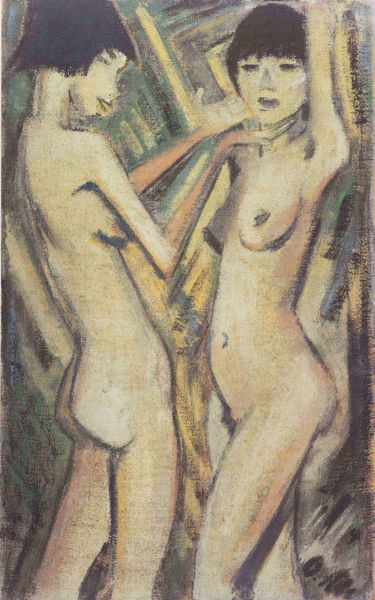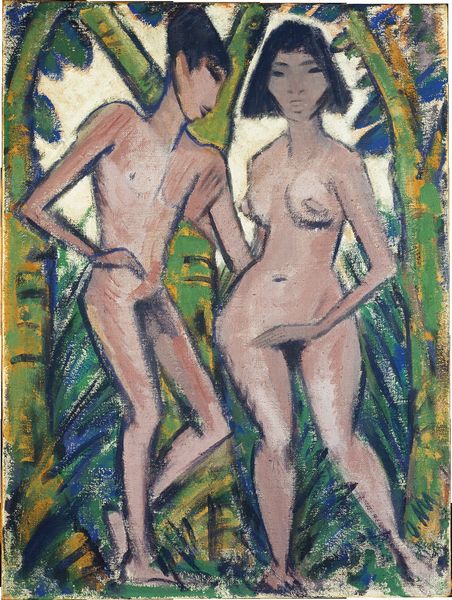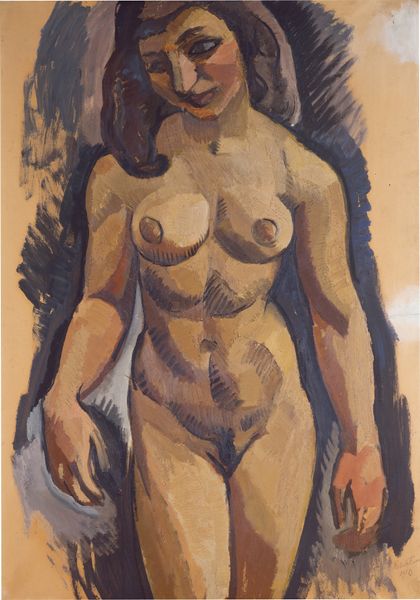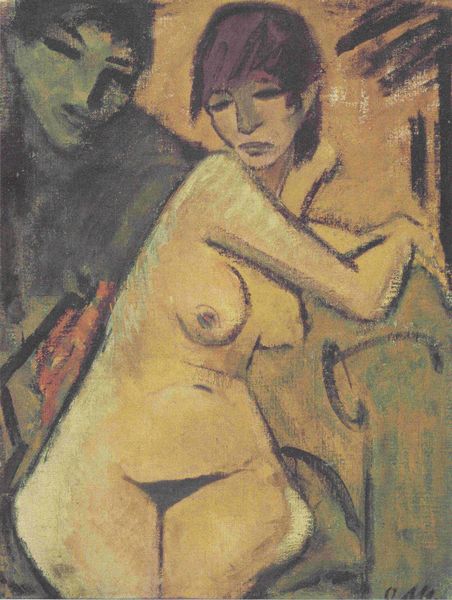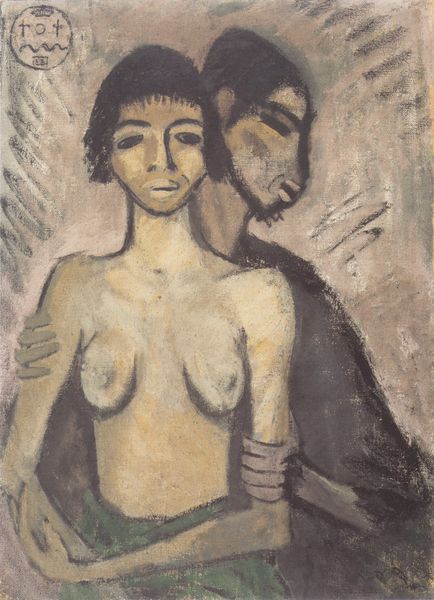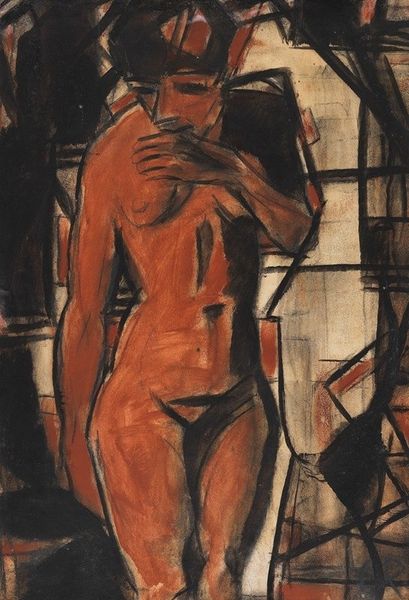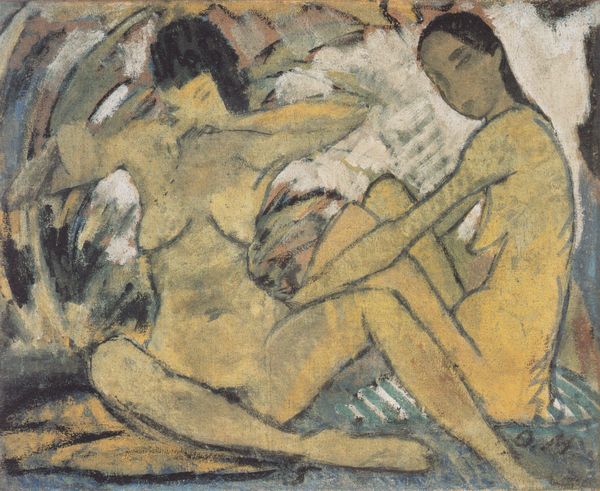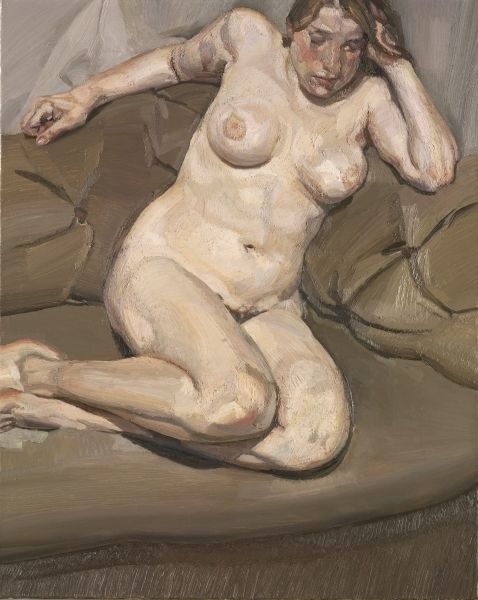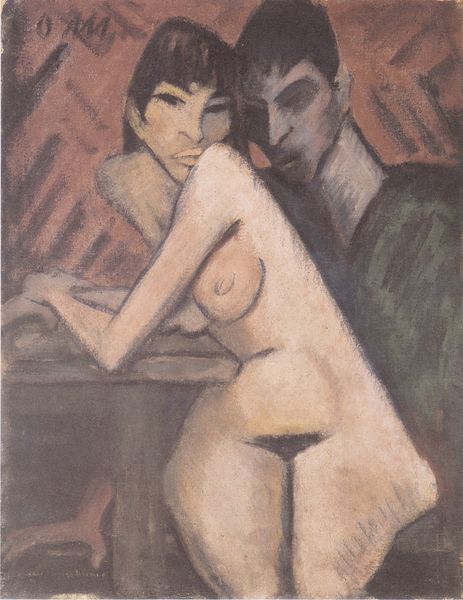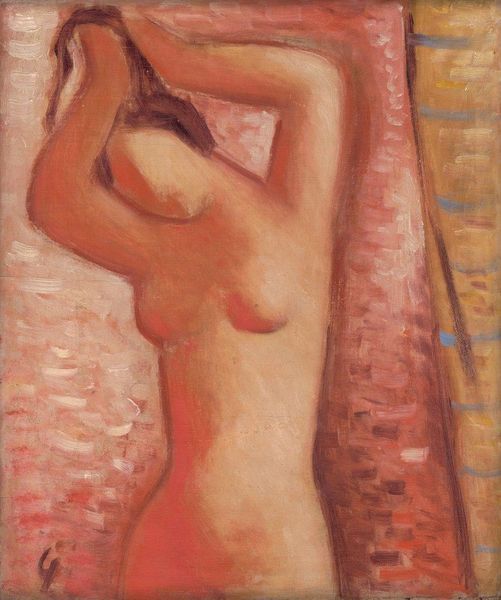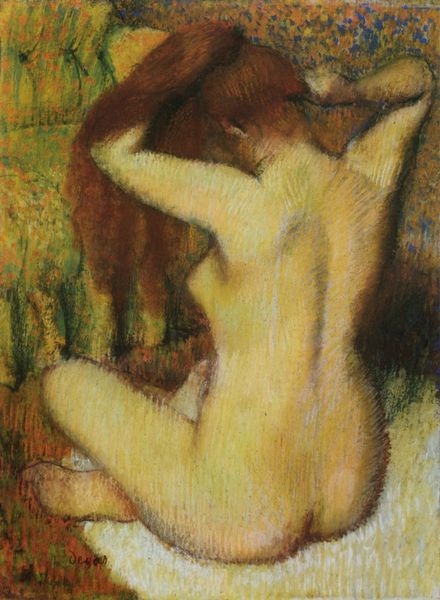
drawing, pastel
#
drawing
#
german-expressionism
#
charcoal drawing
#
figuration
#
oil painting
#
expressionism
#
portrait drawing
#
pastel
#
nude
Dimensions: 75 x 120 cm
Copyright: Public domain
Editor: This is Otto Mueller's "Two Negresses", made with pastel around 1928. The muted colors and soft lines give it a very intimate feel, like we're intruding on a private moment. What do you see in this piece, from a formal perspective? Curator: Initially, one is struck by the tension between the figural and the abstract. Observe how Mueller contrasts the soft, organic forms of the figures with the hard-edged, geometric pattern in the background. It's an interesting visual discord. Editor: Yes, the background is so angular compared to the figures. What does that contrast do? Curator: Semiotically, it destabilizes the figures. The background denies us a conventional reading, almost flattening the women into the plane of the drawing itself. It is expressionistic and challenges conventional modes of representation, don't you think? Editor: Absolutely. And I see how the restricted palette – mostly earth tones – contributes to that flatness. It minimizes depth, directing the eye to the surface. Curator: Precisely. Notice also the line quality – loose, gestural. It prioritizes raw feeling over meticulous representation. Do you see a potential commentary here? Editor: It’s interesting that you ask. It feels like the artist is less interested in accurate representation than in conveying a certain mood or… sensuality, perhaps? Curator: The artist prioritizes feeling above realism. It really pushes the formal qualities of drawing. The drawing becomes about its own language, its own construction. A world constructed using lines and form and colour to signify meaning beyond what they appear to portray. Editor: This has really helped me see the artwork differently by just considering line, shape, and form. It definitely pushed beyond just "what is being shown." Curator: Indeed. Focusing on these fundamental elements opens a world of possibilities within even a seemingly simple composition.
Comments
No comments
Be the first to comment and join the conversation on the ultimate creative platform.
